A good, useful knife doesn’t necessarily need to be expensive.
But it does have be dependable and be able to work hard. This Condor Terrasaur is a good choice for budget-minded users.
by Leon Pantenburg
Disclaimer: I bought this knife to field test. Condor Tool and Knife is not a Survival Common Sense sponsor. These are my opinions and nobody had any input in this review.
There is no place for cheap junk in my outdoor gear.
On the other hand, I know what it’s like to use inexpensive gear because my budget is limited. So I am always on the lookout for inexpensive (not cheap!) survival tools that can do the job. (You can’t compromise on the quality of your sleeping bag and boots!)
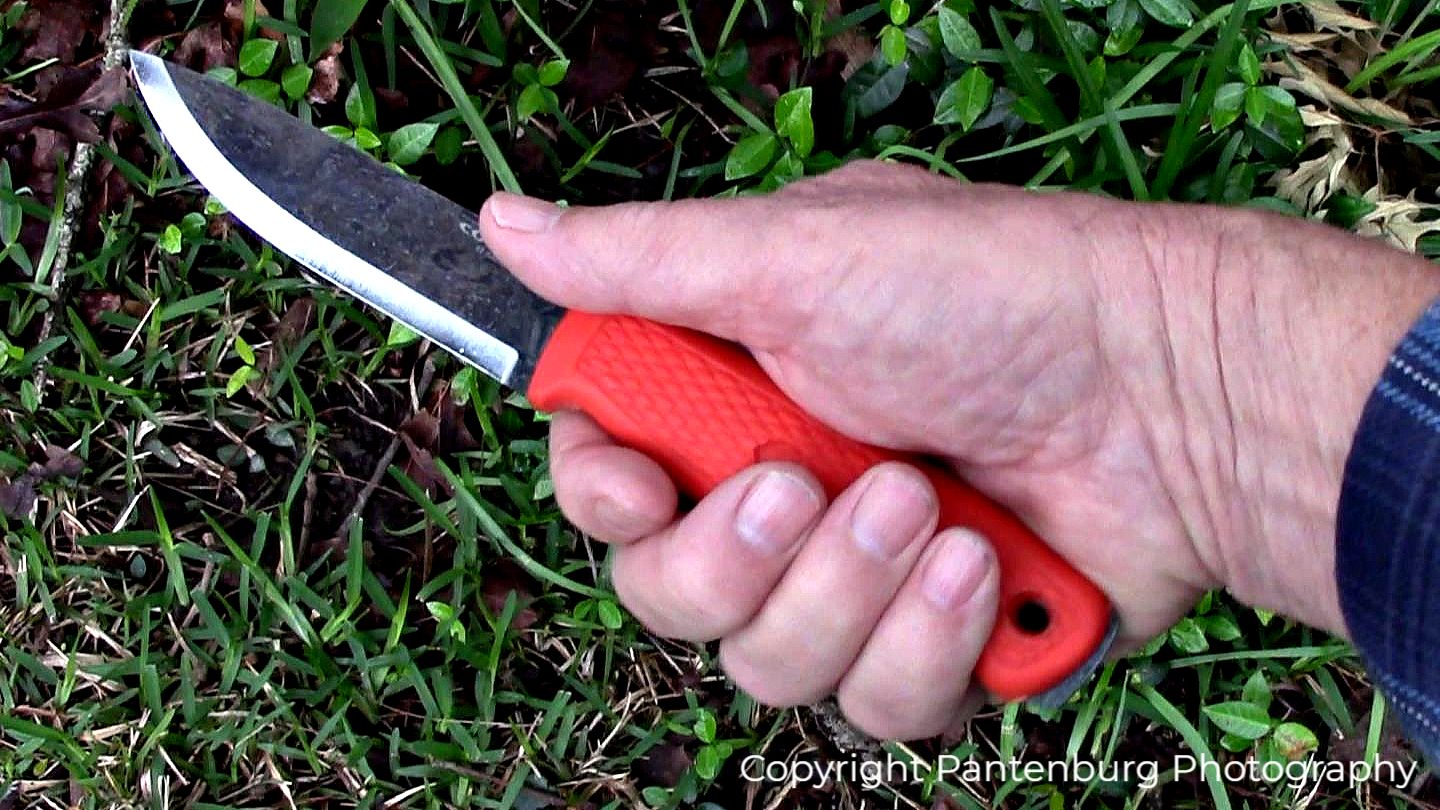
The Terrasaur is an inexpensive, quality bushcraft knife that can be depended upon.
In my role as a wilderness skills instructor, I sometimes work with people who have never handled a knife outdoors. Safe knife use has a learning curve, and quite frankly, many of these folks couldn’t tell any difference in handling between a $20 knife or a $200 one.
So I frequently loan out the excellent Mora Companions. Some stick with those knives, and never feel the need to upgrade. Others might want to up their game and try a different a design. The Condor Terrasaur may fulfill that desire.
Joe Flowers, a designer for Condor Tool and Knife, collaborated with custom knifemakers on a multi-use fixed blade knife in 2009, according to the Condor website. The goal of the Condor Terrasaur is to make an affordable super bushcraft knife that can be used by anyone, from the beginner all the way to the expert woodsman. The Terrasaur features an indestructible polymer handle and ambidextrous sheath, backed by Condor’s lifetime warranty.
Here are the Terrasaur specs:
- Blade Length: 4.15″
- Handle Length: 4.68″
- Overall Length: 8.83″
- Blade Material: 1095 High Carbon Steel
- Blade Thickness: 0.12″
- Blade Style: Drop Point
- Blade Grind: Scandi
- Blade Finish: Natural
- Handle and sheath material: Orange Polypropylene
- Weight: 7.1 oz. (200 g)
- Made in El Salvador
The good stuff:
Full length tang – A survival knife must be as sturdy as possible. A blade tang that runs the full length of the knife is the strongest option for a knife that will be expected to work in extreme conditions. That said, my beloved Mora 840s have about a three-quarters tang, and I’ve never broken one. Actually in some 50+ years of outdoor activities, I’ve never broken any blade.
Blade length: A four-inch blade seems to be the standard for user bushcraft knives, and I’d have to agree with that. The length is a good do-all size – big enough to field dress wild game, but small enough for wood carving.
Steel: The current super steel fad has caused some of the old reliable steels to take a back seat. 1095 has been the standard for high carbon steel for decades, and it can handle just about anything a knife steel needs to do. It will rust, if not taken care of.
Grind: My favorite grind is convex. But a scandi grind, like the Terrasaur has, is a very useful configurations for a bushcraft knife that will be used for wood working. Scandi may be the easiest edge to sharpen: All you do is lay the ground part of the blade on a stone or strop and use that for a sharpening guide. This is one of the easiest grinds to teach sharpening to newcomers.
Point: A drop point is one of the most useful point configurations imaginable. Most of my hunting knives have either a drop or clip point.
Blade Thickness: The blade thickness of .12-inch is about right for a bushcraft knife. It is not the best blade for slicing in the kitchen, but it is fine for most of the camp and bushcrafting tasks it will need to do.
Weight: The Terrasaur is a lightweight at 4.53 ounces.
Sheath: The orange polypropylene sheath is ambidextrous and does a good job of protecting the knife and the user. It rides easily on a belt. It is a bit stiff so far, but I’m guessing it will loosen up with use.
Price: The Terrasaur is widely available at about $45. This is a steal for a quality knife. (Order yours here.)
So do you need a Terrasaur?
The beginner might want an entry level knife to get started in bushcrafting. The experienced bushcrafter might want a quality backup knife that won’t break the bank. The Terrasaur might be the knife for both of these users.
Please click here to check out and subscribe to the SurvivalCommonSense.com YouTube channel – thanks!

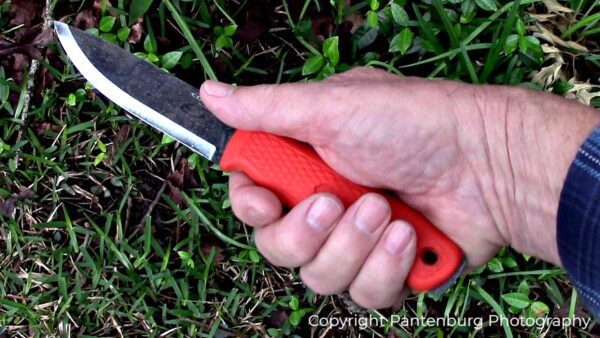
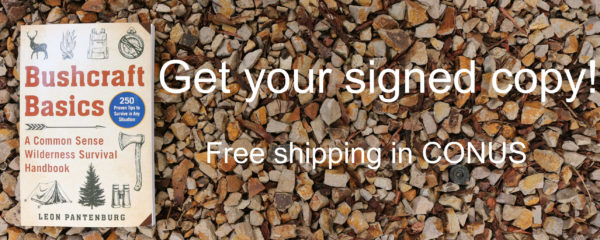
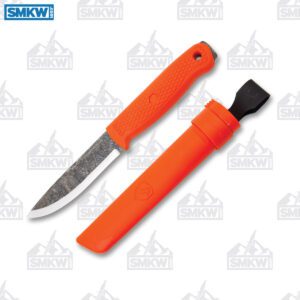
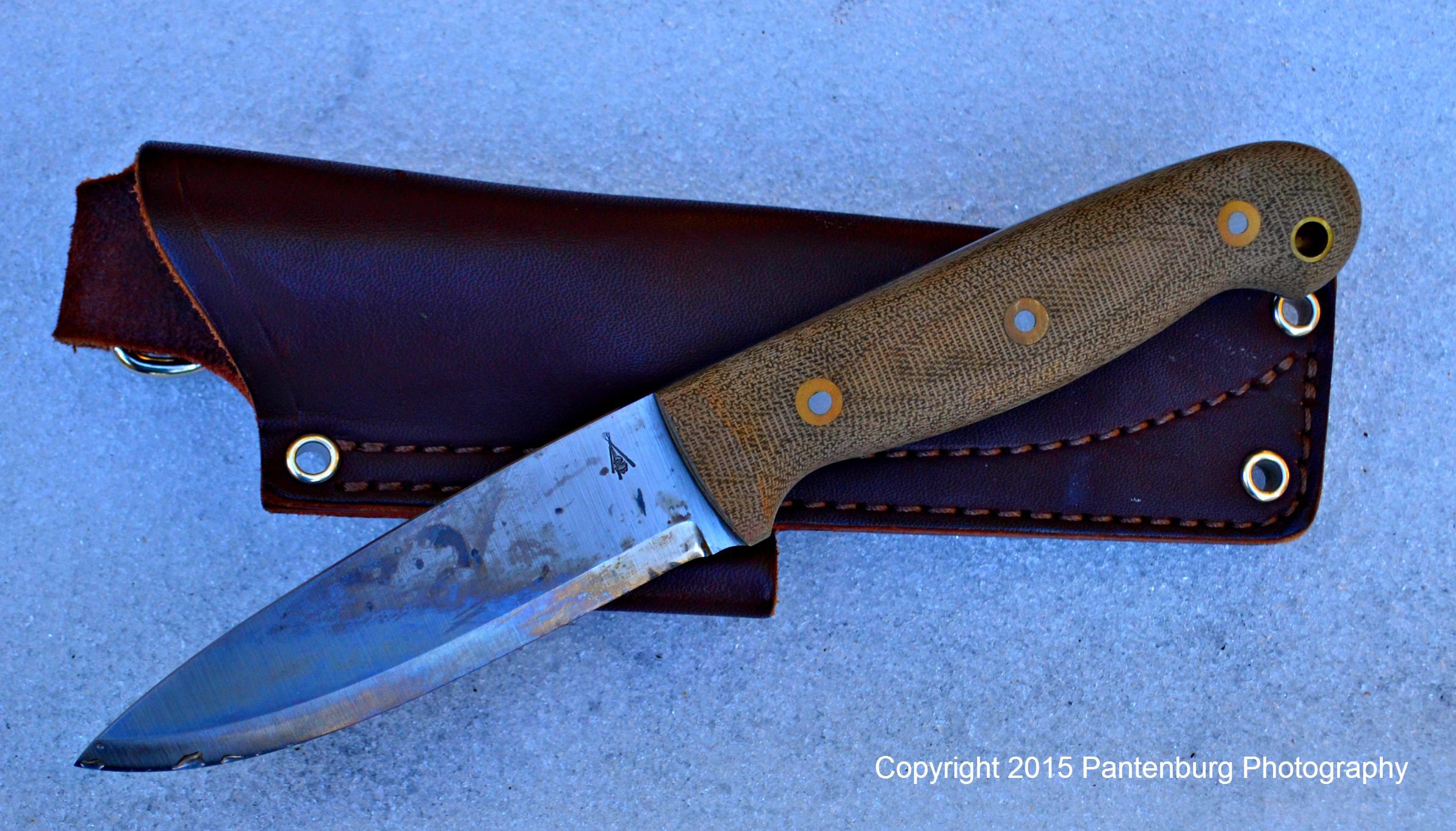
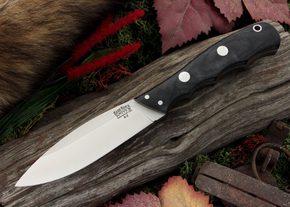

Leave a Reply